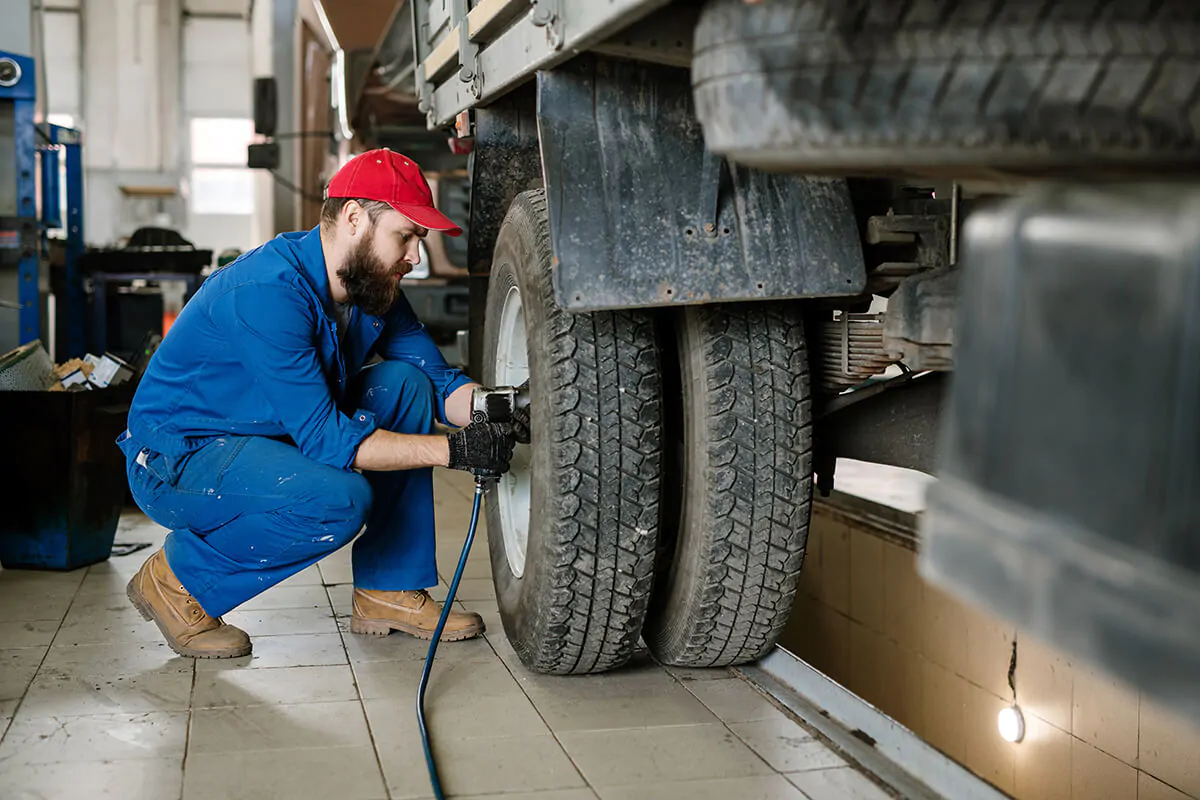Tyre‑pressure management for HGV fleets: cut fuel use by up to 3 %


Tyre‑pressure management for HGV fleets
Keeping every tyre in your fleet at its correct pressure is one of the simplest, lowest‑cost ways to trim fuel bills and emissions. Studies show that just 6 psi below the recommended figure can increase fuel use by around 3 %, enough to wipe thousands of pounds from a busy haulier’s bottom line each year.
Why under‑inflated tyres burn more diesel
When a tyre is soft, its sidewalls flex and a larger patch of rubber meets the road. That extra deformation is called rolling resistance. Your engine has to work harder to overcome it, so it burns more fuel to cover the same distance. Telematics supplier Geotab quantifies it starkly: every 10 psi lost can slash fuel economy by roughly 10 %.
The business case in pounds and pence
Imagine a single 44‑tonne articulated lorry that covers about 80,000 miles a year and averages 8.5 mpg. At today’s diesel price—roughly £1.38 per litre—that truck racks up an annual fuel bill of just under £59,000.
Now apply the conservative 3 % fuel saving that consistently correct tyre pressures can deliver: 3 % of £59,000 is a little over £1,770.
So one truck alone can claw back around eighteen hundred pounds every year simply by keeping its tyres at the right pressure.
Scale that up to a 20‑vehicle fleet and you’re looking at savings of about £35,000 a year—money that would otherwise vanish out of the exhaust pipe. And that figure doesn’t even factor in the extra life you’ll squeeze out of the tyres themselves or the CO₂ reduction you’ll earn. That’s why tyre‑pressure management is one of the quickest, lowest‑cost efficiency wins an HGV operator can bank.
Three‑step tyre pressure management plan
1. Adopt a weekly pressure‑check routine
Use a calibrated gauge, when tyres are cold, and log readings. Drivers gain a safety reminder, and small drops are caught before they snowball into blow‑outs.
2. Fit a tyre pressure monitoring system (TPMS)
Modern retrofit sensors report live pressure and temperature to the cab and fleet portal. Michelin and Bridgestone both claim significant fuel and downtime savings when fleets act on alerts rather than waiting for scheduled inspections.
3. Analyse the data and coach your drivers
Spot patterns: recurring slow leaks on a specific axle, or pressure spikes after hot motorway runs. Share findings with technicians and drivers so everyone understands the cost of ignoring a warning.
Getting the pressure right: What to check
Load: Use the higher end of the recommended range when running at maximum gross weight.
Speed & duty cycle: Long motorway stints heat tyres; monitor hot pressures and adjust cold targets if needed.
Ambient temperature: Pressure drops ≈ 1 psi for every 5 °C fall. Winter checks matter.
Valve caps & stems: Replace damaged ones; many leaks start here.
Quick wins you can implement this month
Put a digital gauge on every fuel island so drivers can top up while tanks fill.
Add tyre checks to daily walk‑rounds and require the reading in the defect‑report app.
Link TPMS alerts to your workshop software so jobs auto‑generate when a threshold is breached.
Reward the best performers (fewest low‑pressure events) with a quarterly safety bonus.
The bottom line
Tyre pressure isn’t glamorous, but it is measurable, actionable, and directly tied to fuel spend. By combining disciplined manual checks with real‑time monitoring, many HGV fleets can shave 2–3 % off diesel use while boosting safety and tyre life. In an era of tight margins and growing environmental scrutiny, that’s a win that starts with nothing more exotic than a tyre valve cap.